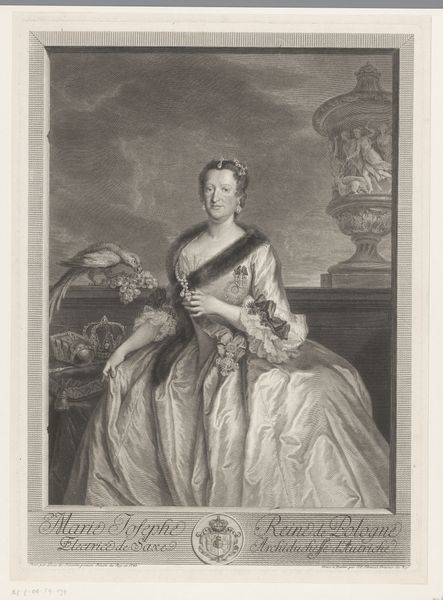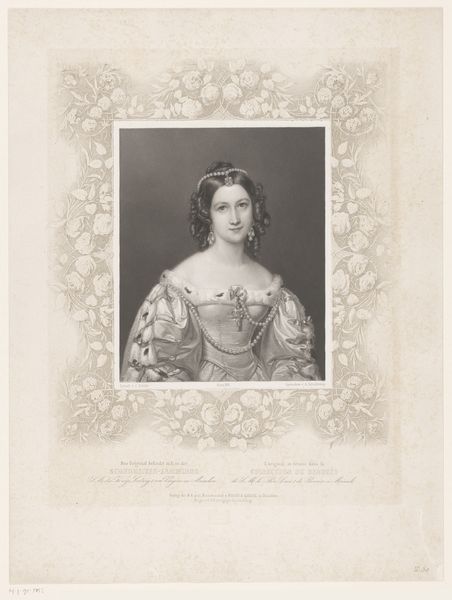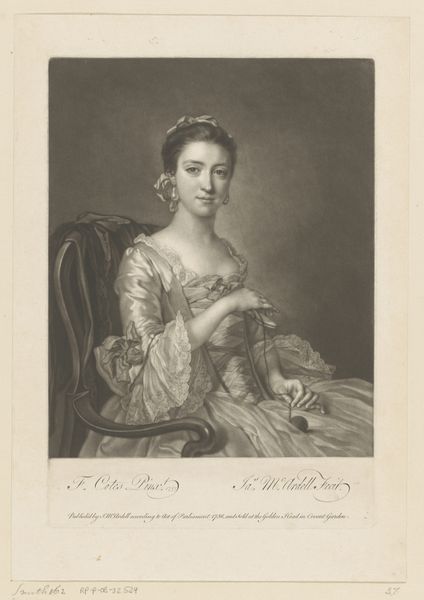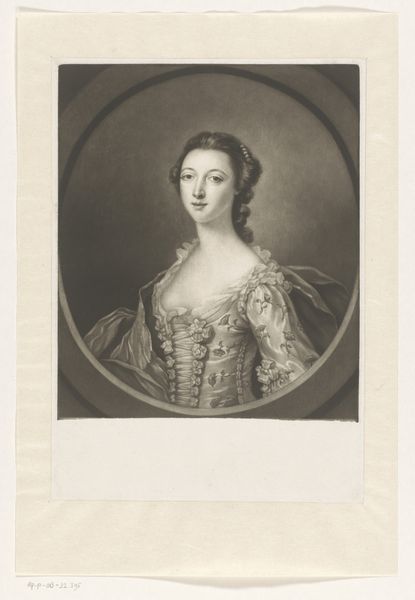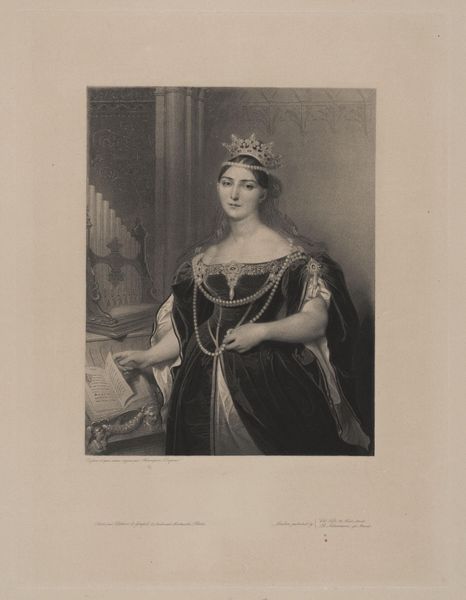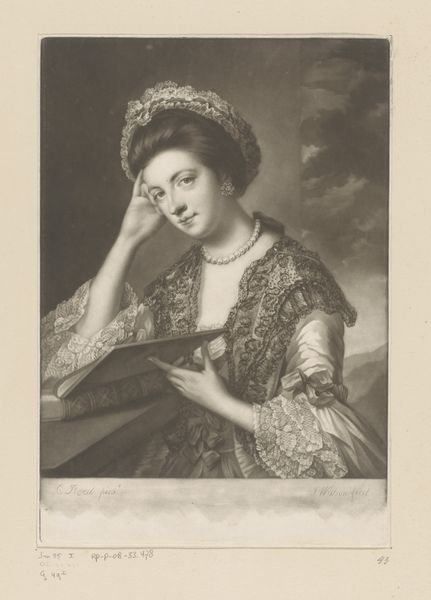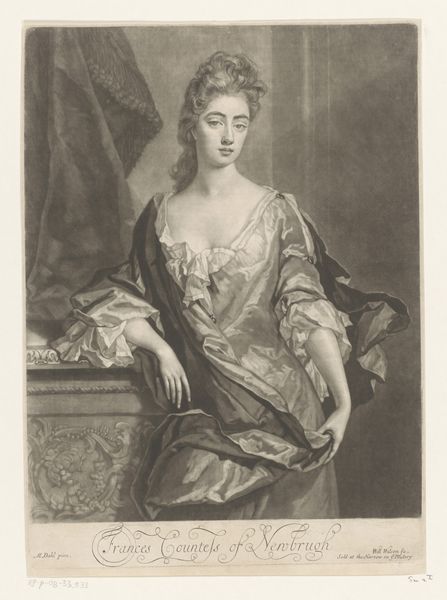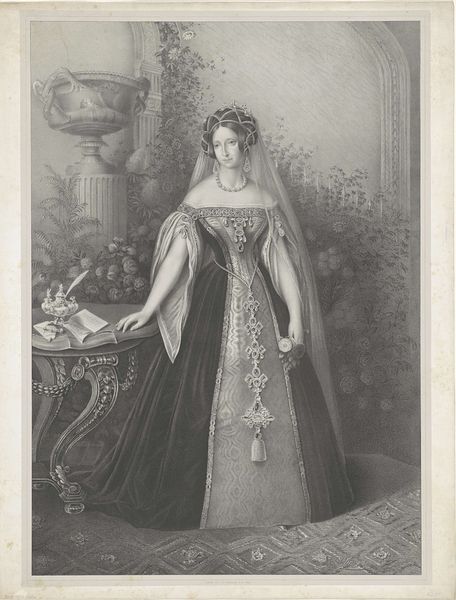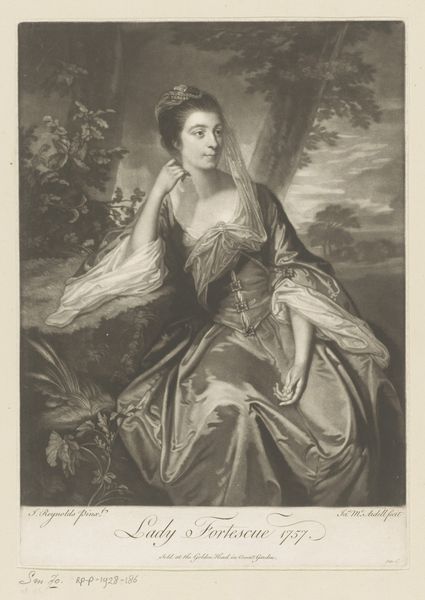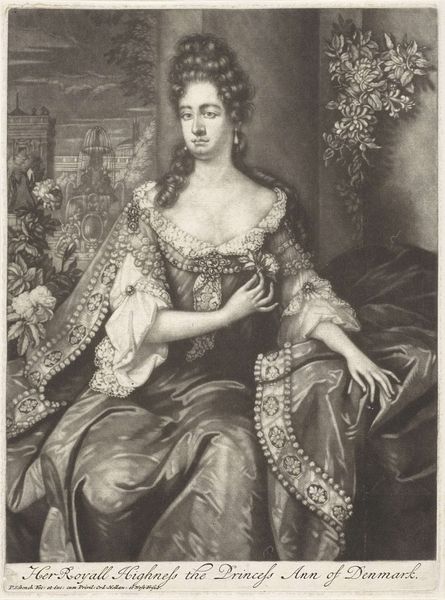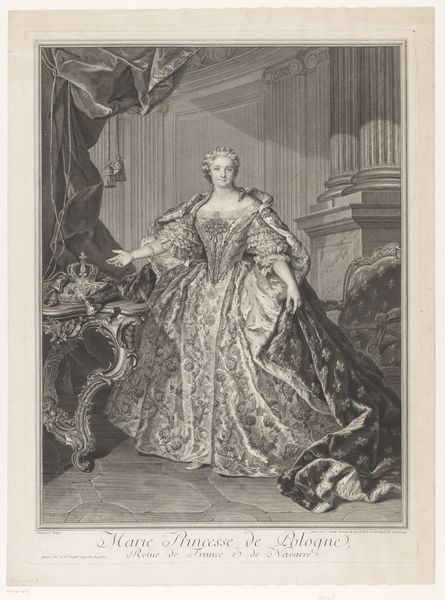
Dimensions: 710 mm (height) x 505 mm (width) (plademaal)
Curator: Joel Ballin's "Princess Alexandra of Wales," created sometime between 1870 and 1883. The piece is an engraving. Editor: It's quite ornate, almost suffocatingly so. So many textures – the fur trim, the draped fabric in the background, even the table covering. It feels…heavy. Curator: Heaviness was certainly part of the aristocratic aesthetic. The image was, in essence, statecraft. Alexandra, Danish princess and later Princess of Wales, was an important figure. Consider the purpose of disseminating her image through prints; it solidified her role and projected an image of both regal authority and approachable beauty. Editor: You said 'disseminating.' So, it's a reproduction, not a singular artwork? This raises a question: how does mass production affect our understanding? It becomes a commodity, and its value isn't solely aesthetic, but social and political, right? An assertion of power made tangible through its multiplied existence and mass consumption. Curator: Precisely. And Ballin, as the engraver, acted as a key conduit in this process. Engraving allowed for widespread reproduction and, by extension, broader societal influence. This was strategic, ensuring Alexandra’s image reached far beyond the court circle. It spoke directly to ideals of the monarchy, gender, and the visibility of power. Editor: Looking closely, the technique is fascinating. See how the light falls on the satin gown? And the texture of the fur… it must have taken an immense amount of labour to transfer all those visual properties into etched lines and tonal values. Curator: Definitely. Printmaking in this context served to flatten and elevate the social standing. This print's wide availability also makes us question its access and how social value is perceived through an artwork like this. Editor: It all makes you wonder about Alexandra's personal relationship with being the object of so much...engraving and display. Curator: Indeed, it's a compelling collision of art, material culture, and political projection. The artist makes that status tangible through craft. Editor: A beautiful reminder that even in seemingly straightforward portraits, the layers of meaning can be surprisingly complex. Curator: Agreed, the image itself and its reproduction are all wrapped up together.
Comments
No comments
Be the first to comment and join the conversation on the ultimate creative platform.
